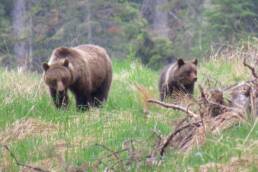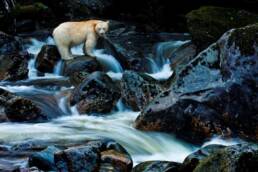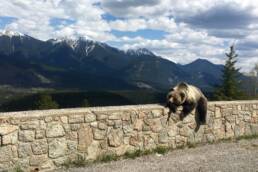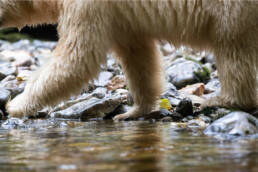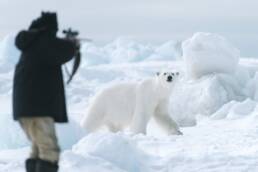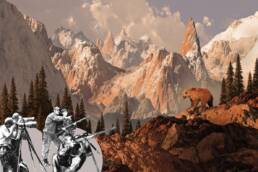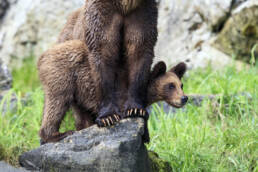In this article, Aq’am Chief Joe Pierre describes in detail Qat’muk in the East Kootenays and what this sacred place means to him and the Ktunaxa people.
“You wouldn’t want to build a resort in the Vatican, so why are we talking about building a resort in any other sacred space?” With that quote Aq’am Chief and Ktunaxa storyteller Joe Pierre skyrocketed to prominence during the debate about the Jumbo Glacier ski resort development. He helped share the views of the Ktunaxa nation who believe Qat’muk, the Kootenay, British Columbia, area that includes parts of Farnham, Glacier, Horsethief, Toby, and Jumbo creeks is a sacred place.
Eddie Petryshen, an East Kootenay local and conservation assistant with Wildsight, sat down with Joe to record his thoughts and stories related to the Ktunaxa people. Part one of the interview appeared here and in part two, transcribed below, Joe gives us a detailed look at Qat’muk and why this beautiful place is so sacred to Ktunaxa people.

Eddie Petryshen: When did you first learn about Qat’muk?
Joe Pierre: When I first heard about it and really started to understand about Qat’muk, I was already in my twenties, it was the early ‘90s and it was when this resort proposal came out. We had a nation-wide meeting. Our leadership was aware of what was happening with the Jumbo proposal, so our leadership wanted to talk to the nation people about what was happening. I remember being at that meeting; I was a young man, so really all I did was listen.
Once people understood what was being told to us from our leadership and what the plan was in this part of our world, the rest of that meeting day became elders standing up. Just one after another, all of them standing up, talking about our responsibility as Ktunaxa in our homelands. Immediately, people were talking about Qat’muk as the home of the grizzly bear or the spiritual home of the grizzly bear or the different terms they were using for the place. And how modern human beings can’t, or won’t or don’t listen to our brethren and don’t even consider them. Again it’s because we remove ourselves from being part of the whole of all living things and put ourselves on the top. That attitude is what allows consumerism. That attitude of being on the top is what leads to a lot of our environmental problems.
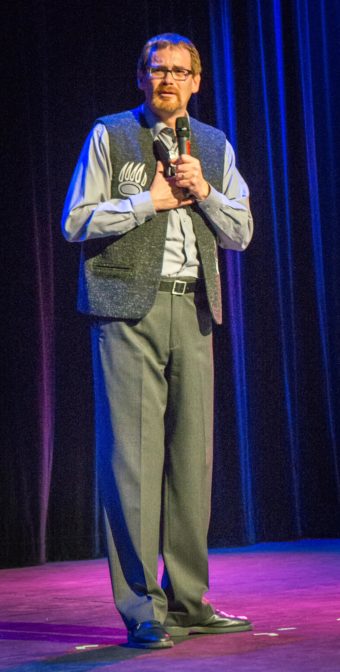
So that day I heard elder after elder standing up. And by the end of the day, I had a pretty good idea that it was a pretty important place for us, a pretty spiritual place for us. But you know, I still needed some explanation. So I went to my grandma, and said, “Grandma, I heard all those elders talking today and can you help me to really understand what they were talking about?” and my grandmother did it in a really simple way, she just said, “Well, it’s where the grizzly bears go to dance.” And then she left it at that for me to think about and to wonder about.
So when I left my grandmother that day, that’s what I had to think about. I had to think: what do I know about dancing? If that’s where the grizzly bears go to dance, what is my grandmother getting at? And so I started thinking, well, what have I been taught about dancing throughout my life, in our Ktunaxa ways? Dancing is a big part of our ceremony of life. So I started thinking about that and I realized that my grandmother was talking about all living things, how we all are interconnected and we all need to interact with one another and communicate with one another. I knew that what my grandmother was talking about was that when we’re dancing, the grizzly bears are dancing as well—we are dancing together. And it just so happens that the Qat’muk valley is where the grizzly bear goes to dance.
Afterward, I started learning other things about Qat’muk as well. That Qat’muk is the place where the Grizzly bear spirit is born, where it goes to heal itself, and where it eventually goes to die. And so we are talking about that spiritual level of things, right? Not the physical realm, but that spiritual realm.
We know that when we are in ceremony and dancing in the wintertime, that those grizzly bears are sleeping, they are sound asleep. But really, the spiritual being of the grizzly bear goes to Qat’muk at that time of the year, so that they can come together and dance and so that we are able to communicate with them, because we’re dancing and singing their song. So when we are dancing and singing our songs, they are dancing and singing, and that’s when we are able to really communicate. So if you take Qat’muk away, you take away the grizzly bear’s place to dance and you are really, seriously interrupting our ability to communicate with the grizzly bear spirit. And that’s the problematic piece.
I remember at that meeting was the very first time I was told about this, with our elders standing up and speaking. You have to remember the century that happened before that, because this was 1990. The century that happened before that was the century of colonization, of residential schools, of sixties scoop, of veterans being treated poorly after coming home after fighting for this country, of just everything: the laws that kept us from voting until 1960, the laws that took aboriginal status away from women because they married a non-Native man, the laws that gave status to non-aboriginal women who married Native men.
https://youtu.be/ScaPSm_R_x8
A lot of the elders who were at that meeting that day are no longer with us and this is another part that makes it very, very important for me, because that day they were talking about our responsibility to speak on behalf of the grizzly bear. Now I have the responsibility to speak on their behalf, on behalf of the grizzly bear. So it’s even doubly more important for me to be able to say these things.
So that day, I remember a lot of our elders saying: we can’t talk about these things, these sacred parts of our worldview with suyapi (our word for white people). We can’t be speaking with the suyapis about these things, these are our things. All that persecution, all that abuse led Ktunaxa people to hold our culture very, very close to ourselves. So much so that our ceremonies are being done in secret, so much so that only certain parts of the Ktunaxa people find out about the ceremonies and others don’t, because it’s secret. So at that point in the early ’90s, we said that we can’t talk about these things with the suyapis. We know our responsibility is to speak on behalf of those grizzly bears. We know the reasons for our spiritual connections, but we are not going to tell those things to those suyapis because they are going to take them, like they have taken everything else.

I remember at that first meeting, our elders were telling our leaders at the time, the chiefs of those days: you go and oppose this, and you say no to them. We don’t have to talk about why we are saying no, they need to listen to us, because right now we are starting this treaty process. They have come to us and said they want to make treaty with us, and if they truly want to make treaty with us, then they need to listen to us. And so if we are saying no about a piece of land, then all we should have to say is no, we shouldn’t have to explain why. Because we are the sovereign people within our lands, right? We are the ones with the rights and title within our land, and so if we are saying no, we shouldn’t have to explain ourselves. We should be listened to. Well, that wasn’t good enough, right?
For that to change, it took a near death experience for one of our spiritual leaders. He came very close to passing away; he had heart troubles and his heart just about gave out on him in the early 2000s. But when he was in the hospital, his guardian spirits, which are the grizzly bears, came and sat by his bed and told him: you need to start telling these people what you have been holding close, because they are not listening and now is the time. So in the early 2000s, as a Nation, we started to tell the provincial government, “Okay, we have been saying no for the last dozen years and now this is the reason why.” And so a lot of people interpreted that as “Oh, they just came up with that reason now.”
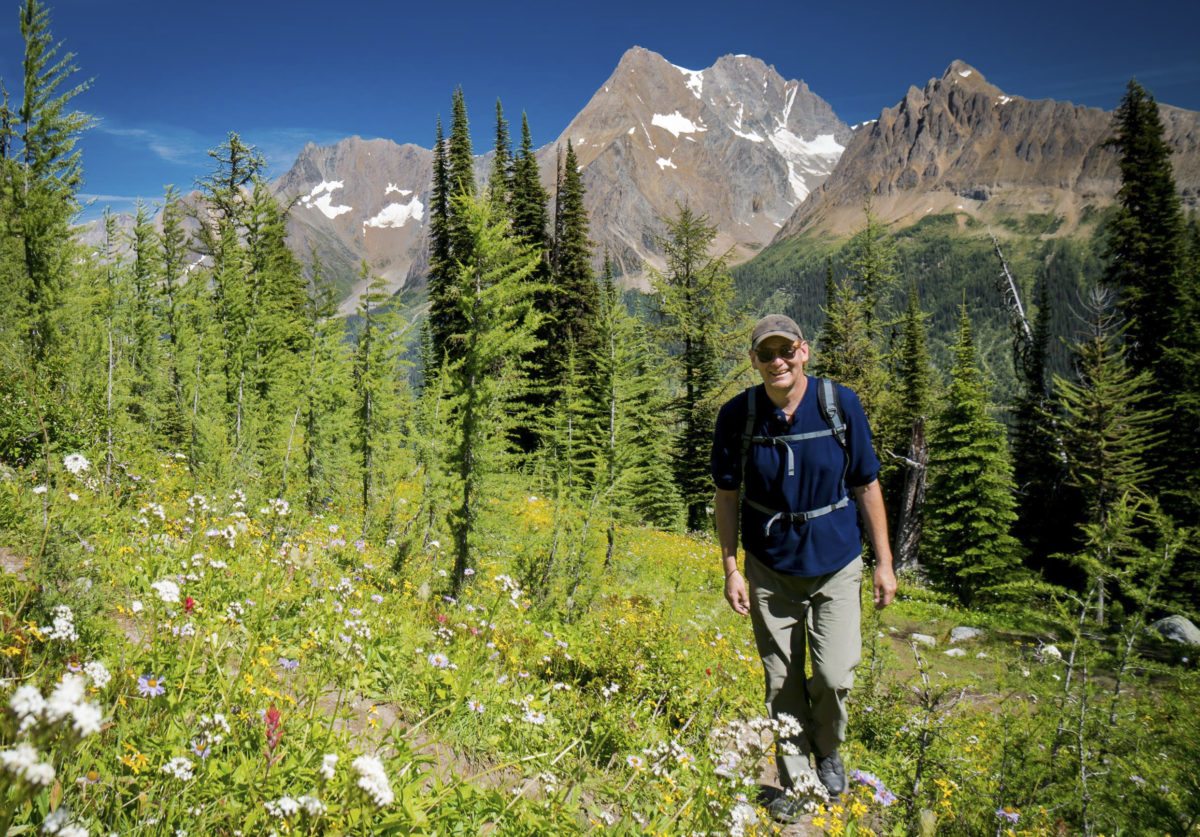
No, the reason we held it close was the 100 years of persecution and colonization before, that’s the reason why we held it close and are just talking about it now. A lot of people like to believe or think that we just came up with that thing in the early 2000s, but we have been saying no since the beginning. We just didn’t explain those sacred parts in the beginning because they are sacred. And if you have a full understanding of that word, sacred, which is not a Ktunaxa word, it’s an English word, if you understand sacred then we shouldn’t need to explain ourselves, especially in our own homelands.
EP: What’s your vision for Qat’muk once the proposed resort is defeated?
JP: My vision is that seven generations from now, a young Ktunaxa family can go there and enjoy it the way I am enjoying it with my son right now. My grandmother, when I was very, very young, she used to talk about, in our mountains here, there are times of the year when we need to be out of those mountains and down in the valleys and in the low places, and that’s the wintertime and the snow. And she used to say to me, “If you’re going to be up there, if you’re going to be in there, you need to be able to get there and be there under your own power, because if you’re accessing those places under the power of a vehicle, then you really haven’t gotten yourself there. And what happens if something happens to you there? What happens to that vehicle? You’re not going to be able to survive, because you haven’t gotten yourself into that place. If you can’t get yourself into those places under your own power, then you shouldn’t be there.

Backcountry skiers, like Leah (Leah Evans), get themselves there, and I have no problem with that. You’ve gotten yourself there under your own power. You’ve earned the right to be in there. The heli-skiers: it’s problematic, but at least with the heli-skiers, they’re not leaving the footprint that’s being suggested for actually having a resort there. That’s a permanent footprint that you cannot remove. That would cut those corridors for the animals. Whereas the heli-skiers, at least their footprint is a lot lighter. It’s still significant, with the fuel that’s going into those things and there is still a disturbance factor for animals. Some of the people in our Nation are okay with that, others still have problems with it. I absolutely believe in what my grandmother used to teach me, in that if you can’t be out there under your own power, then you should not be there.
When you’re on a sled like that you’re not getting all the messages either, because you can’t hear them. You have no time for them. So I really have no problem with people that earn their right to be there, skiing on that glacier. Because I know that those people earned that right to be there. People who have physically put themselves on the line, probably very much do respect that place in the way that it needs to be respected. But skiing on that place in the summertime, because it is a glacier, is so problematic. That’s just ludicrous, unbelievable, especially with what we know about climate change and the glaciers. I mean it’s pretty darn clear when you see photos from the 1970s and then you look at photos now. The glaciers are clearly disappearing. So to propose to ski on one all year long…?
To read part 3, the last part of the interview with Joe Pierre, log on to keepitwild.ca.
Related Stories
Spoil – Documentary on the Great Bear Rainforests
Is the economical growth in Canada worth destroying the entire West Coast of Canada? SPOIL - A powerful documentary on…
Grizzly Snooze – The Backstory of a Classic Photo
Alberta resident and mountain lover Andrew Dole happened to be in the right place at the right time to snap this…
The Great Bear Rainforest Goes IMAX
Twenty years ago, this film could not have been made. But with new technology, an $8-million budget, and friends from…
“The Killing Of A Polar Bear Is Complex” — Indigenous Rights vs. Mainstream Culture
From the icy edge of the Arctic Ocean to the heated protests at Standing Rock, North Dakota, an indigenous photographer…
Ursus Urgentus – The Fate of BC’s Mighty Grizzly
British Columbia’s grizzly bears rule the peak of the food chain. But they’re being left to waste at the bottom of the…
Where The Grizzly Bears Roam: The Soap Opera That Is Khutzeymateen Inlet
Up against the rugged and remote stage of British Columbia's northern coast, a charismatic cast of Ursus arctos…


